Little Angels A Clinical Manual Of Homeopathic Remedies For Infants And Children
| Author: |
Mayur S Mahajan |
| ISBN: | 9788131918043 |
149
Paperback
English
Homeopathy is known for its safe and gentle approach to curing ailments and when it comes to children, this treatment seems ideal. The case-taking process and the dynamics between doctors and patients is the beautiful language in itself. Children cannot express their discomfort accurately as adults can ...Read More
Homeopathy is known for its safe and gentle approach to curing ailments and when it comes to children, this treatment seems ideal. The case-taking process and the dynamics between doctors and patients is the beautiful language in itself. Children cannot express their discomfort accurately as adults can and herein lies the importance of this unspoken language that only a keen observer can decipher.
This book " Little Angels" is a complete guide to homeopathic medicines for infants and children. This book is the result of the author’s rich clinical experience. He went out of his way to describe the condition of each child in as much detail as possible, making it very easy for readers to understand and apply this knowledge in their clinic.
In this book, the author has shared some important impressions from the environment of a child which may help in understanding the child and solve cases successfully. These hints come directly from the author’s clinic desk and hopefully will be helpful for clinical assessment.
The main aim of this book is to make homeopathy very simple and applicable. Students of Homeopathy who read different Materia Medicas by various authors must have observed that there is no specific book that would explain children’s remedies in the most simple way. The author has tried to simplify the concept of understanding children’s remedies at all possible levels.
With increasing awareness about homeopathy as well as rapidly increasing lists of remedies and rubrics, such a book series has become a real need of practicing physicians because a busy practitioner does not get enough time to read huge books and/ or sit in a corner and think about the rubric for long hours.
Book Highlights:
• The narration of cases is presented with gestures and mimicry that for us 'bring the patient to life'
• the condition of each child is given in as much detail as possible, making it very easy for readers to understand and apply this knowledge in their clinical practice.
• All the rubrics are taken from Synthesis Repertory and Complete Repertory
About the Author:
Dr. Mayuresh Mahajan ( MD Hom) is the President and powerhouse of HHF. He is a leading Homoeopath in the Thane & Kalwa area. He is also a keystone in HHF which bridges the ignoramus with the knowledgeable in this form of Homoeopathy. Apart from being an excellent clinician he is also a very popular lecturer at local and national seminars. His excellent clinical skills added to his deep theoretical knowledge blended with intermittent and spontaneous humor make for a heady cocktail in his lectures and keep the audiences asking for more.
| Pages | 149 |
|---|---|
| Format | Paperback |
| Imprint | |
| Language | English |
Add a Review
Your email address will not be published. Required fields are marked *
Mayur S Mahajan
The energy house and The President of HHF, Dr Mayur Mahajan is a very well known and a leading homeopath in thane and all over India. Apart from being an excellent clinician he is a very popular speaker in local and national seminars. He believes in simplicity in Homeopathy.He is one of the ingenious resource builder in HHF and with his spontaneous humour and precise demonstrative capabilities makes his seminars Live and impressionable.
Related Products
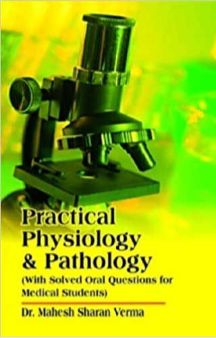
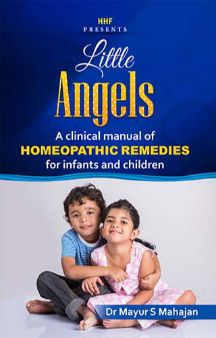


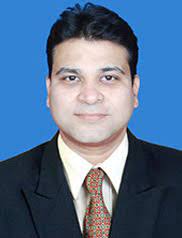
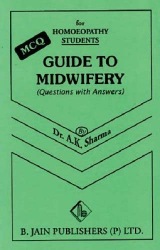
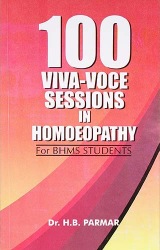

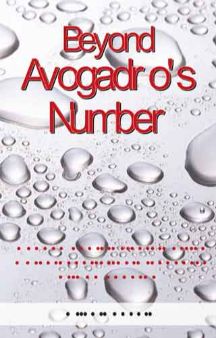
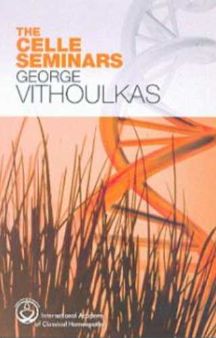
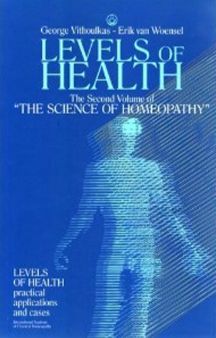


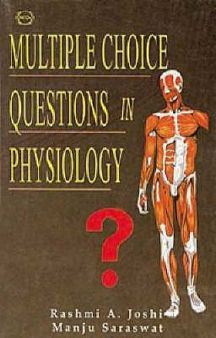
Vatsala Sperling
Recently, while attending a webinar series conducted by Dr. Gaurang Gaikwad, I heard Dr. Mayur Mahajan’s presentation. He had a uniquely funny, and yet deeply compassionate and humane approach to children’s cases. In the West, particularly in the USA, homeopaths mostly work as general-purpose family practitioners and shy away from calling themselves specialists in any specific discipline (there are a few exceptions). Dr. Mahajan’s presentation confirmed for me that of course, homeopaths can choose a discipline they resonate with the most, put their heart and soul into becoming the best in their chosen area, and be a ‘specialist’. From this angle, this book, “Little Angels, A Clinical Manual Of Homeopathic Remedies For Infants And Children” written by Dr. Mayur Mahajan is bound to be interesting for homeopaths with a specialization in pediatrics. On reading this book, I find that it has a broader range of appeal as well. It can also be very handy and useful for family members and relatives who study homeopathy as a hobby and provide immediate care for family members, kids included, at home, using remedies from their collection that has grown over the years. Particularly in the USA, since the widespread and much publicized repression of homeopathy by health authorities, homeopathy has survived to this day because young mothers carry homeopathy on their shoulders and care for their kids at home using remedies available in the health food stores. These moms (in my heart, I salute them silently and with deep admiration) will find a fantastic use for this book. Dr. Milind Rao, in his foreword, says that this book will change your outlook toward homeopathic perception in children. Now, this line pushes my curiosity button. If a book can change my perception, I will drop everything else and read it. Dr. Ashok Mohan has commented, “I am amused at how Dr. Mayur handles those lovable toddlers in his clinic. His narration of cases with gestures and mimicry brings the patients alive in front of us.” I could only agree with this comment. During his presentation, Dr. Mayur creates pictures with words…pictures of children, their illnesses, their remedies, their behavior that call out for a remedy… and these vibrant pictures are hard to forget. From such a vivacious, lively, and well-experienced teacher, I expect a book no less than the very best. Now I must read the book and find out if he does indeed bring remedies and patients alive on the pages of this book so that both homeopaths and lay readers with interest in homeopathy can relate to these vibrant images. In children’s cases, our observations are very important and along with the history and account of illness given by the primary caregivers, our observations of the child can guide us toward a fuller understanding. Dr. Aniruddha Joshi corroborates that the author is a keen observer. Does he use his power of observation and share it with the readers of this book, encouraging them to develop a similarly keen sense of observation? We can find this out by reading this book. Dr. Mahajan begins the book by sharing his early experiences of “difficulties” in practice. He read a lot but found it “difficult” to apply his knowledge clinically on real patients. He ended up failing more than succeeding. But he was determined to not give up. It is said that the key to success is trying one more time after every failure. Dr Mahajan persisted, did not turn his back on the problem, and he took each failure as an opportunity to learn more, learn deeper and learn better from teachers who had mastered the art and the science of homeopathy. His apprenticeship with these seasoned stalwarts inspired him to make homeopathy “SIMPLE” and this book, in my view, is an outcome of that inspiration. I like “simple”. Our materia medicas are great at giving us remedy pictures in a head-to toe format and these pictures, as collections of symptoms, sound very clinical. Our ancient and classical materia medicas generally do not mention socio-psychological nuances that color the environment in which children grow. Judith Ullman mentions Saccharum for children adopted from orphanages where they were very likely denied love and warmth in their infancy and early childhood. Jan Scholten calls Magnesia carbonica the remedy of choice for orphans. But this book, Little Angels, begins with an introductory chapter on socio-psychological environment and how we ought to sharpen our wits and understand these aspects of children’s lives, if we want to serve these children in the true sense of the word. In this chapter, with surgical precision, Dr. Mahajan has addressed topics like nuclear family, joint family, long gap between siblings, pampered kids, domineering parents and so on. He also encourages us to make keen observations regarding tone, gestures, dirtiness / cleanliness levels, dress / clothing, sensitiveness, or carefree personality, and use these signposts for forming our first impression – because, as you rightly guessed, mostly children do not speak for themselves. We need to observe with all our five senses. Next, Dr. Mahajan focuses on Carried – desires to be carried – constantly Hard to inferiors – kind to superiors Sensitive children Timid and shy babies Playful children Destructive and hyperactive children Fearful babies Fear of examination Nursing – desire to nurse all the time In a practice focused on children, these aspects mentioned above could be the specific observations by the practitioner, or these could be the way the primary caregiver describes the child. Either way, we can learn from Dr. Mahajan’s experience of these aspects as he has laid them out in this book, as distinct chapters. In each of the above-mentioned chapters, we get to read about a few of the most highly indicated remedies and by the time we get to the end of the book, we would gather a gift of crystal clear images and indications of 35 different remedies – all commonly available, and in use for the past couple of centuries! Take for example, “carried, desire to be carried, constantly.” In this chapter, Dr. Mahajan mentions Cina, Chamomilla, Arsenicum album, Antimonium tartaricum, Kali carbonicum, and Sanicula. For each of these remedies, he goes into a case from his practice, rubrics taken, most useful rubrics to be considered, and finally, how to understand a Cina child, an Arsenicum album child, and so on. These descriptions are unlike what you would usually get to read in our old or new materia medicas. A picture of the remedies – as expressed in children – is the core, the strength, and the beauty of this book. If Dr. Mahajan keeps writing volume after volume, focusing on remedy images as seen in children, he would make an unparalleled and totally unique contribution to pediatric homeopathy. After you read Cina and Chamomilla in this book, and how they are expressed in children, you will never ever be confused about which of these remedies to give to a child who wants to be carried constantly. In his lucid, simple, easy to grasp style Dr. Mahajan has described his experience and observation of Cina, Chamomilla, Arsenicum album, Antimonium tartaricum, Kali carbonicum, Sanicula, Lycopodium, Lachesis, Veratrum album, Platina, Ignatia, Carcinocin, Pulsatilla, Staphysagria, Silicea, Baryta carbonica, Ambra grisea, Cocculus, Tuberculinum, Tarentutal hispanica, Stramonium, Hyoscyamus, Gelsemium, Argentum nitricum, Calcarea phosphorica, Kali phosphorica, Nux vomica, Phosphorus, Hammamelis, Moschus, Spongia, Pertussin, Borax, Sulphur, and Calcarea carbonica. For each of these remedies he has given a brief and picturesque case, analysis and evaluation, and very adeptly, he has chiseled out a sharp and clear image / essence of the remedy – as seen in children. I found this book to be light-hearted, entertaining, to the point, and reader friendly. It is engaging for professional homeopaths as well as lay readers. After reading it, irrespective of whether you are a homeopath or simply a consumer of homeopathy, a lay reader – you will gain some clarity, some confidence, and some “can-do-spirit” that is so essential to your success as a practitioner or a free-lance home prescriber, and I strongly recommend this book to both. About the reviewer - Vatsala Sperling Vatsala Sperling, RSHom (NA), CCH, MS, PhD, PD Hom was the Chief of Clinical Microbiology services at a children’s hospital in Chennai, India, when she published extensively and conducted research with WHO, Denmark. On moving to the USA to start a family, Vatsala pursued an education in Homeopathy with Misha Norland’s school. She is a published author of ten books including her latest, The Ayurvedic Reset Diet (www.InnerTraditions.com). Journals from US and abroad frequently publish articles and papers written by Vatsala Sperling on topics including spirituality, health and homeopathy. Vatsala continues to study with several teachers and practices classical homeopathy. She has served on the board of directors of NASH and currently she serves as a volunteer with NCH. She can be reached via her website (www.Rochesterhomeopathy.com)
Dr Divya Kumar Verma
Book –Little Angles – A Clinical Manual of Homeopathic Remedies for Infants and Children. Reviewed by – DR D K Verma MD(Hom) Senior Homeopathic Medical Officer (Rajasthan Government) Author – Dr Mayur S Mahajan Publishers – B Jain Publishers (P) Ltd. Year of publication – 2020 First edition – 2013 Second edition – 2015 Third Edition – 2018 Fourth Edition – 2021 Eight Impression - 2021 Pages – 174 Price – 595 Rs Content of the book – This book deals with the approach to homeopathic pediatric case taking with explanation of many remedies at the level of “mind”. In the initial section of this book, the author writes about the basic psychology of the child with respect to the family setting and emotional causative factors leading to illness in child. The author impresses upon the gestures and tone of the child while taking a case. This section also deals with the follow up criteria after administration of a remedy. The direction of improvement is important. In the second section author discussed about the rubric – Carried Desire to be carried, with remedy differentials. Understanding of various remedies is nicely done with various cases. The cases depict the keen observation and sharp mind of the author. The basic theme of the remedy at mental level is beautifully discussed with metaphoric understanding of rubrics. For example – the basic theme of Cina is being explained by the core rubric - Quieted, cannot be, by cases. Metaphoric understanding of Biting – his Tumbler in Arsenic case is very well explained. Such metaphoric understanding of rubrics will be of much help to students and practitioners as it gives an imprint of the core understanding of the remedy. In the next section another rubric – Hard for Inferiors and kind for Superiors is described in detail. Understanding of lyco, lach, veratrum and plat through pediatric cases is marvelously done in the light of this rubric. The rubric Deafness Pretended of veratrum is superbly explained. Further in the next section remedies for sensitive children are explained. The core sensitivity of ignatia, carcinosin, pulsatilla, staphysagria and silicea is explained again by cases. Author has again differentiated all these remedies so that readers get a crystal clear picture of these remedies. The next section describes timid and shy babies. Author has described and differentiated the timidity of baryta carb and ambra grisea. In further sections similarly author beautifully explains about the playful children with remedies, destructive and hyperactive children with remedies, fearful babies with remedies and so on. Overall it is a treat to read this book. It is a store house of knowledge. Language is simple to understand. This is the work of art and science marvelously done by Dr Mayur S Mahajan. As was said by Dalai Lama –“ Share your knowledge. It is a way to achieve immortality.” If anyone once reads this book, he or she will never forget the ultimate work which the author has done. About the Author - Dr Mayur S Mahajan M.D(Homeopathy) President and Power House of HHF, is a well known and a leading homeopath in thane and all over India. Apart from being an excellent clinician he is a very popular speaker in local and national seminars. He believes in simplicity in Homeopathy. He is one of the ingenious resource builders in HHF and with his spontaneous humor and precise demonstrative capabilities makes his seminars live and impressive. This book is a research of his rich clinical experience which will keep you spellbound. And once you start reading it, you just cannot stop till you finish it. He is in the process of research in congenital anomalies in children. About the reviewer: Dr Divya Kumar Verma - B.H.M.S. M.D. (Hom.)(Father Muller Homoeopathic Medical College, Mangaluru, Karnataka) S.C.P.H. (United Nations). He has experience of 10 years of clinical experience in government dispensary through Classical Hahnemannian Homoeopathy. Awards Received – 1. Certificate of Appreciation in State Level 259th Dr Hahnemann’s Day Celebration for commitment and execution of duties as a Doctor and significant achievement during the year 2013-14. 2. Certificate of Appreciation for Contribution and Continued work for Homoeopathy by B Jain Pharmaceuticals Pvt Ltd on 3rd September 2017. 3. Certificates of Appreciation for excellent work in Arogya Mela (Rajasthan Government) in 2015 and 2019.
Dr Divya Kuma Verma
About the reviewer: Dr Divya Kumar Verma - B.H.M.S. M.D. (Hom.)(Father Muller Homoeopathic Medical College, Mangaluru, Karnataka) S.C.P.H. (United Nations). He has experience of 10 years of clinical experience in government dispensary through Classical Hahnemannian Homoeopathy. This book deals with the approach to homeopathic pediatric case taking with explanation of many remedies at the level of “mind”. In the initial section of this book, the author writes about the basic psychology of the child with respect to the family setting and emotional causative factors leading to illness in child. The author impresses upon the gestures and tone of the child while taking a case. This section also deals with the follow up criteria after administration of a remedy. The direction of improvement is important. In the second section author discussed about the rubric – Carried Desire to be carried, with remedy differentials. Understanding of various remedies is nicely done with various cases. The cases depict the keen observation and sharp mind of the author. The basic theme of the remedy at mental level is beautifully discussed with metaphoric understanding of rubrics. For example – the basic theme of Cina is being explained by the core rubric - Quieted, cannot be, by cases. Metaphoric understanding of Biting – his Tumbler in Arsenic case is very well explained. Such metaphoric understanding of rubrics will be of much help to students and practitioners as it gives an imprint of the core understanding of the remedy. In the next section another rubric – Hard for Inferiors and kind for Superiors is described in detail. Understanding of lyco, lach, veratrum and plat through pediatric cases is marvelously done in the light of this rubric. The rubric Deafness Pretended of veratrum is superbly explained. Further in the next section remedies for sensitive children are explained. The core sensitivity of ignatia, carcinosin, pulsatilla, staphysagria and silicea is explained again by cases. Author has again differentiated all these remedies so that readers get a crystal clear picture of these remedies. The next section describes timid and shy babies. Author has described and differentiated the timidity of baryta carb and ambra grisea. In further sections similarly author beautifully explains about the playful children with remedies, destructive and hyperactive children with remedies, fearful babies with remedies and so on. Overall it is a treat to read this book. It is a store house of knowledge. Language is simple to understand. This is the work of art and science marvelously done by Dr Mayur S Mahajan. As was said by Dalai Lama –“ Share your knowledge. It is a way to achieve immortality.” If anyone once reads this book, he or she will never forget the ultimate work which the author has done.